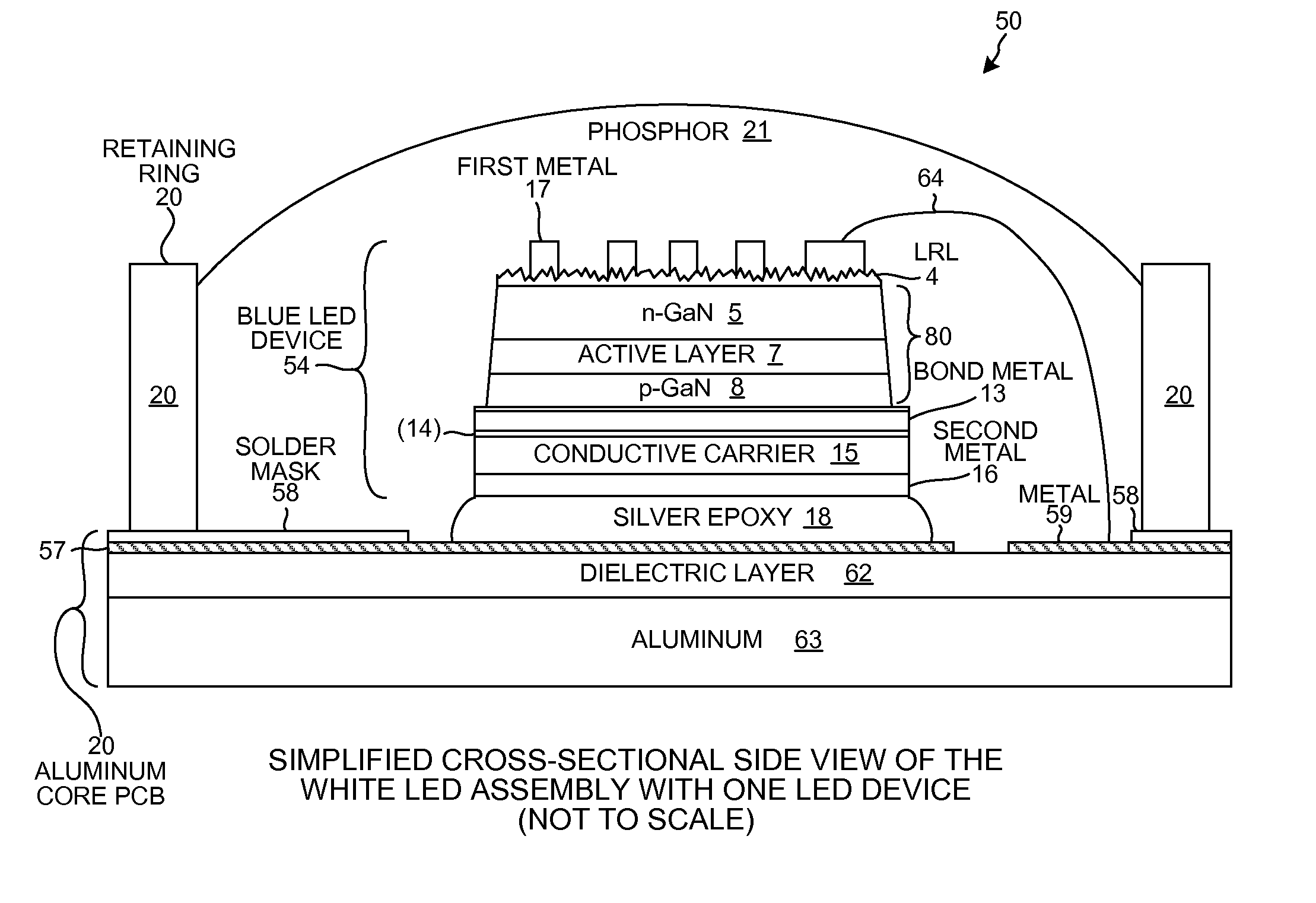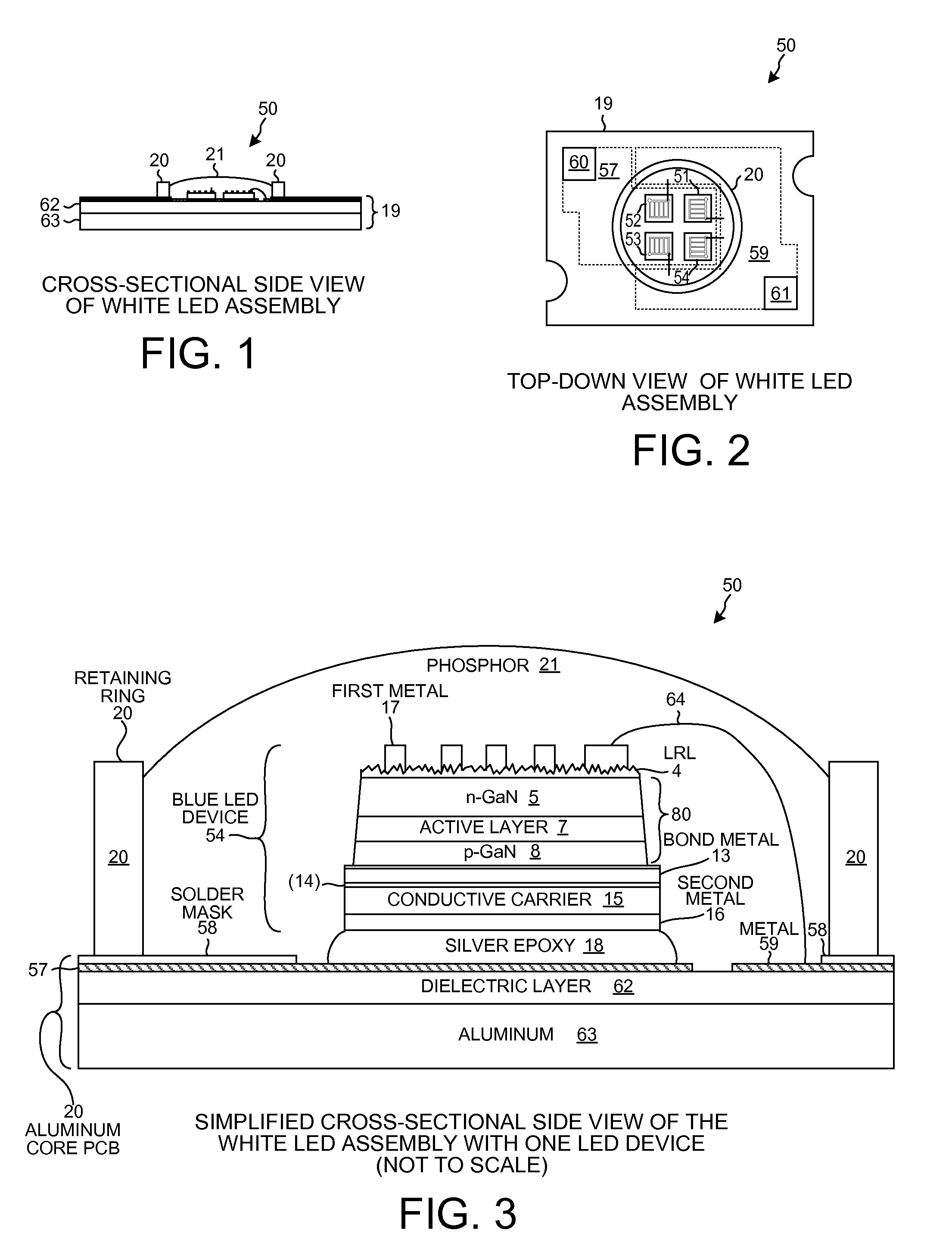Buffer Layer for GaN-on-Si LED
a buffer layer and led technology, applied in the field of gan-on-si led buffer layers, can solve the problems of gallium-nitride substrate wafers, non-monochromatic and non-coherent light, and other substrates, which are still undetectable, and achieve the effects of reducing the cost of manufacturing blue leds, reducing lattice defect density, and easy preparation
- Summary
- Abstract
- Description
- Claims
- Application Information
AI Technical Summary
Benefits of technology
Problems solved by technology
Method used
Image
Examples
Embodiment Construction
[0048]Reference will now be made in detail to some embodiments of the invention, examples of which are illustrated in the accompanying drawings. In the description and claims below, when a first layer is referred to as being disposed “over” a second layer, it is to be understood that the first layer can be directly on the second layer, or an intervening layer or layers may be present between the first and second layers. The terms such as “over”, “under”, “upper”, “lower”, “top”, “bottom”, “upward”, “downward”, “vertically”, and “laterally” are used herein to describe relative orientations between different parts of the blue LED device being described, and it is to be understood that the overall blue LED device being described can actually be oriented in any way in three-dimensional space.
[0049]FIG. 1 is a cross-sectional side view of a white light emitting diode (LED) assembly 50. FIG. 2 is a top-down diagram of the white LED assembly 50. The white LED assembly 50 includes four vert...
PUM
| Property | Measurement | Unit |
|---|---|---|
| thick | aaaaa | aaaaa |
| thickness | aaaaa | aaaaa |
| wavelength | aaaaa | aaaaa |
Abstract
Description
Claims
Application Information
 Login to View More
Login to View More - R&D
- Intellectual Property
- Life Sciences
- Materials
- Tech Scout
- Unparalleled Data Quality
- Higher Quality Content
- 60% Fewer Hallucinations
Browse by: Latest US Patents, China's latest patents, Technical Efficacy Thesaurus, Application Domain, Technology Topic, Popular Technical Reports.
© 2025 PatSnap. All rights reserved.Legal|Privacy policy|Modern Slavery Act Transparency Statement|Sitemap|About US| Contact US: help@patsnap.com



